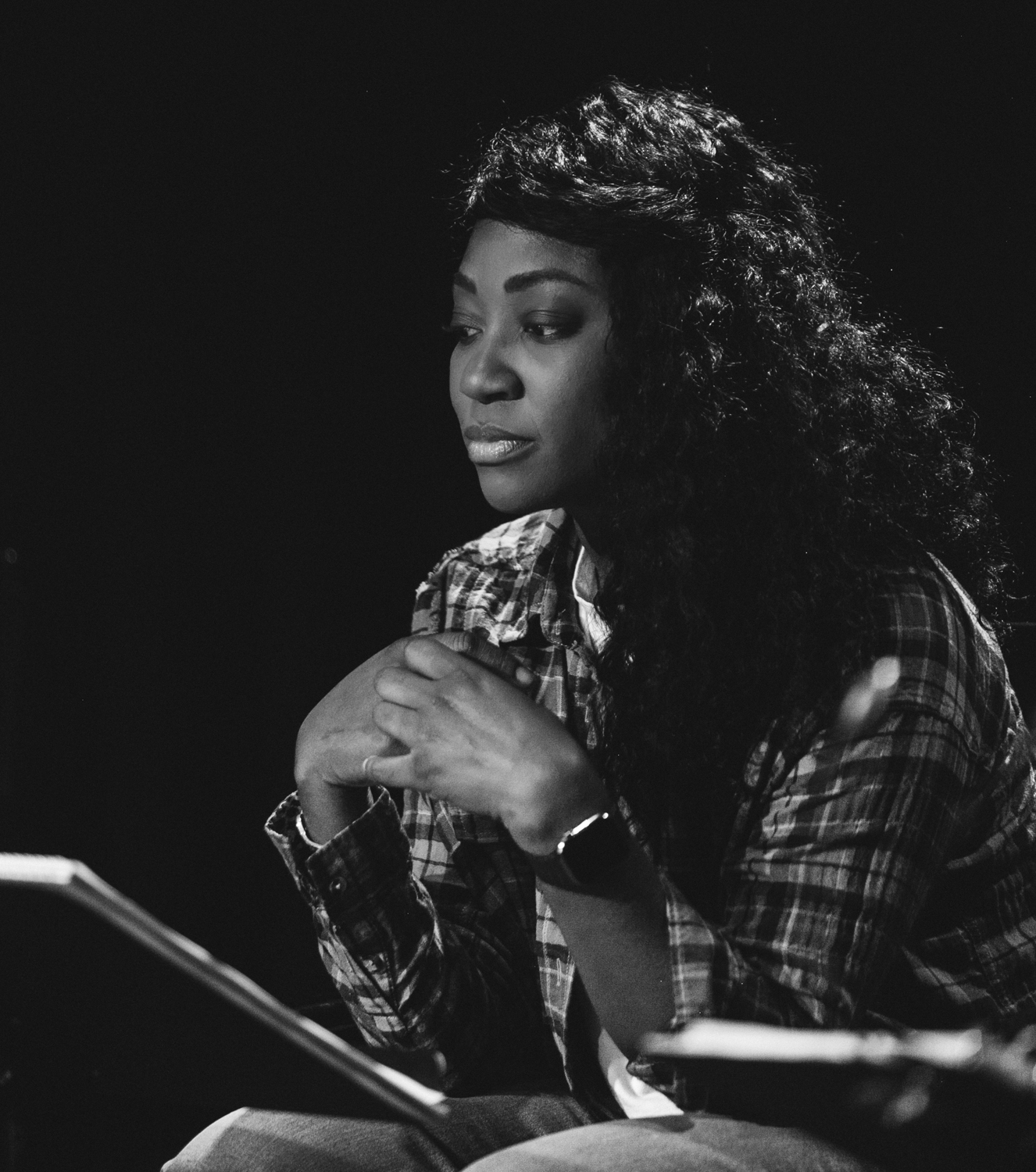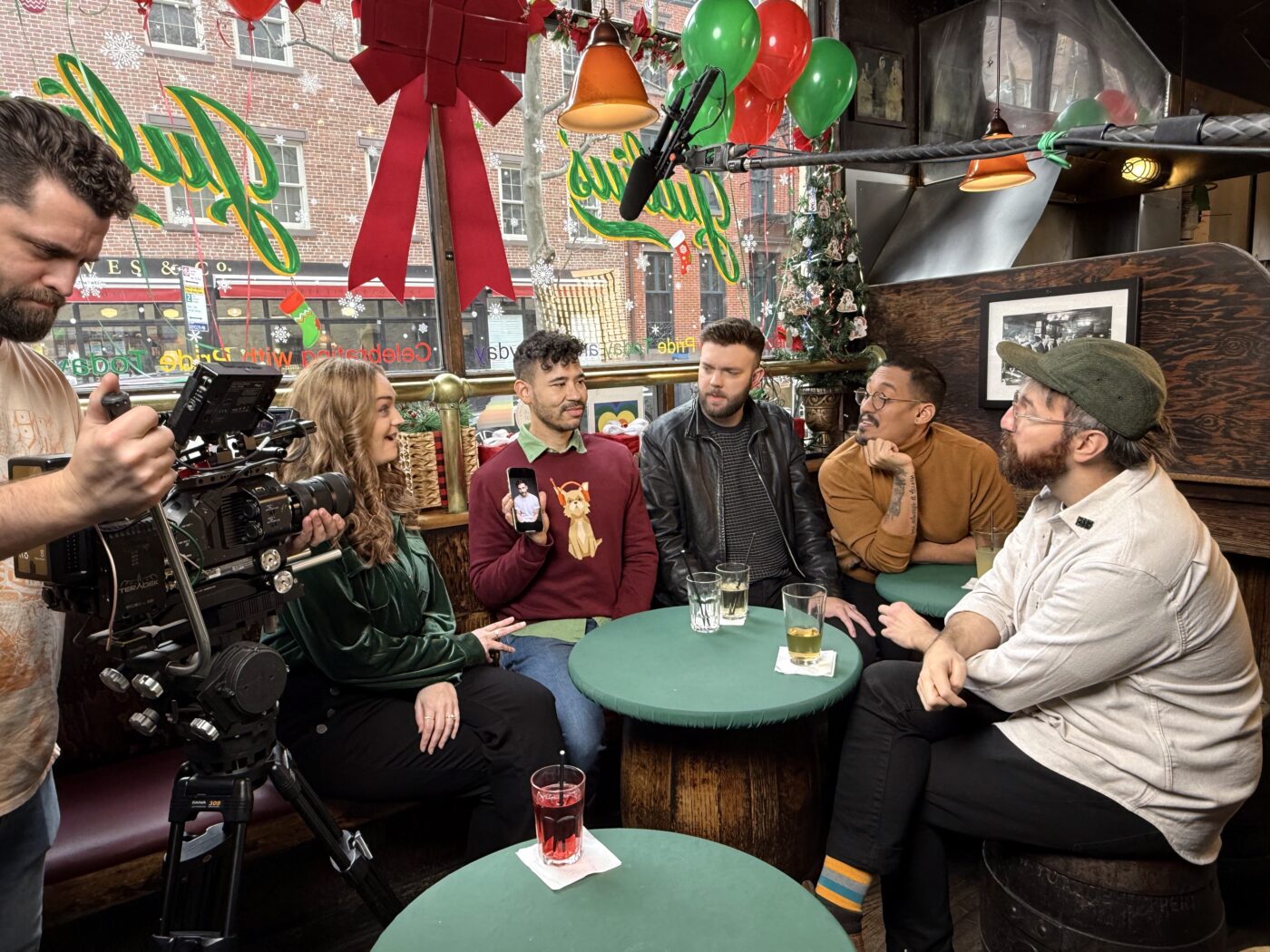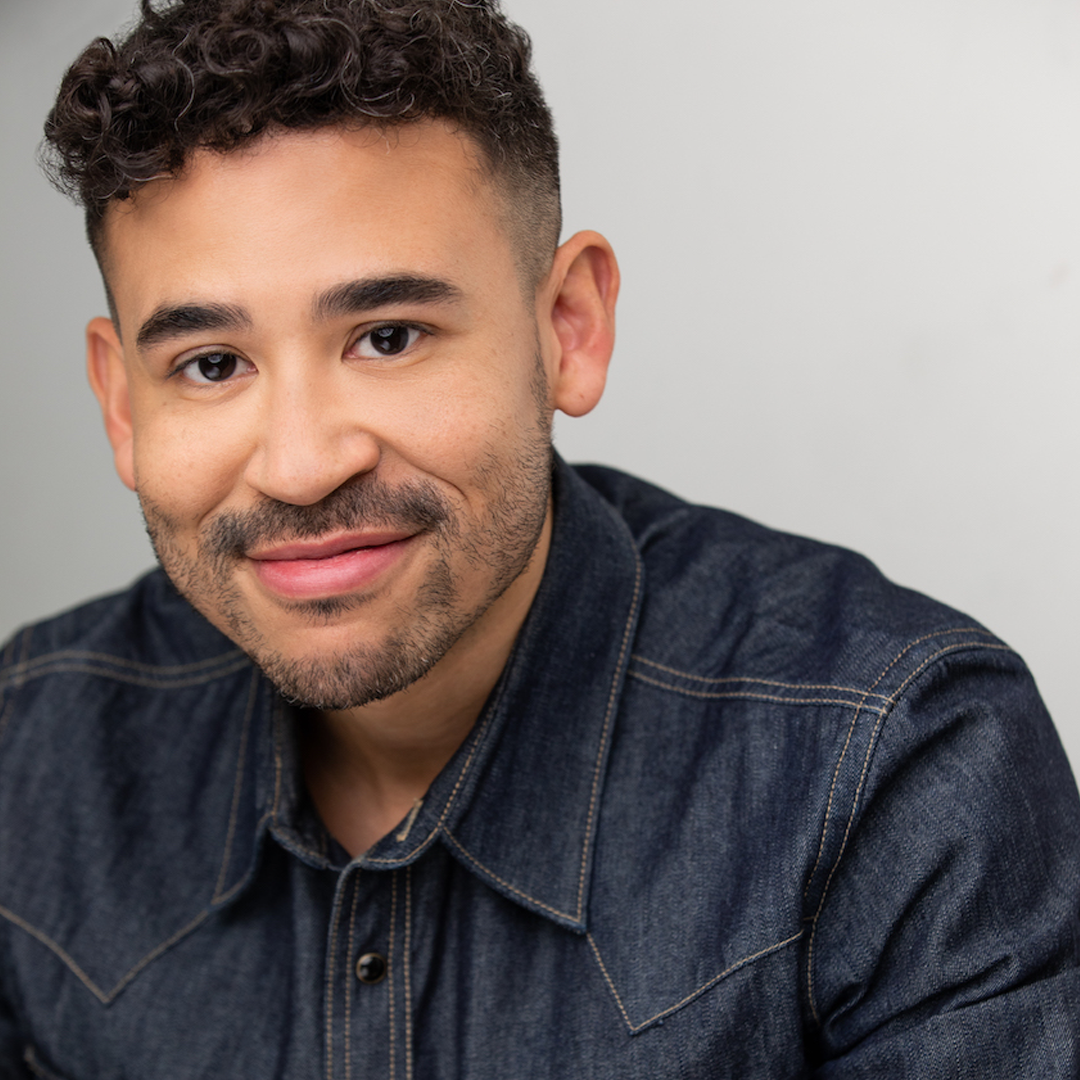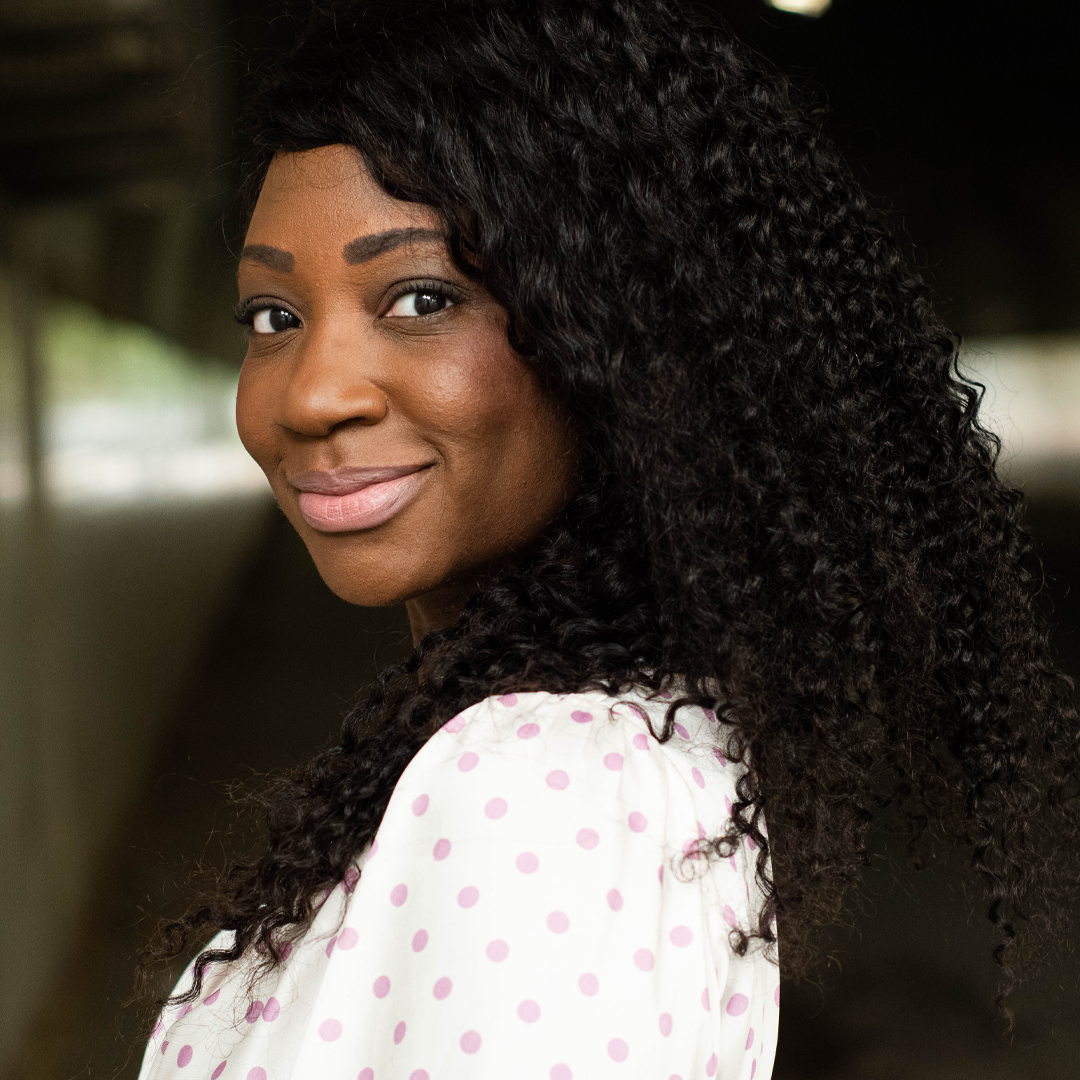“There is nothing new under the sun, but there are new suns.” –Octavia Butler
“There is nothing new under the sun, but there are new suns.” –Octavia Butler

10 minutes, or the time it takes to enjoy a snack
In an environment where meaningful disabled representation is still sparse, Christine Bruno, Dickie Hearts, and Natasha Ofili are three actors and makers creating vivid, intersectional storytelling that subverts expectations, challenges audiences, and offers something more. We asked these three creators why they do what they do and how their approaches to this work have changed over time, in particular after collaborating with other disabled practitioners.
A Q&A WITH CHRISTINE BRUNO, DICKIE HEARTS, AND NATASHA OFILI
What excites you about storytelling, either of your own stories or taking on roles that don’t address your own experiences?
Natasha Ofili: Storytelling is a journey of emotions, rawness, and experiences. Storytelling is also the connection that binds us all together, like the roots of trees in a forest. Storytelling excites me because it makes me feel like I am an actual human being who exists in this world while helping others feel acknowledged for their existence, too.

[ID: A white woman with short brown hair wearing sunglasses and a SAG-AFTRA t-shirt stands under a rainbow archway that reads “Union Proud.”]
Christine Bruno: Live performance is unlike any other art form: by its very nature, it cannot be fully realized until seen by at least one other person. The magic of storytelling, for me, comes from a need to share with others the full breadth of what it means to be human — to inhabit a character — fictional or autobiographical.
This question intrigued me because my response lies directly in the framing of the question itself. I have had the good fortune to perform my own stories as well as to play fictional characters written by others, including the opportunity to originate several roles. As a young actor, I bought into the myopic, dehumanizing fallacy that my body onstage would make nondisabled audiences uncomfortable, giving them license to distance themselves from their thoughts and feelings and ultimately, from the story itself. I leaned into my internalized ableism and measured my success by how believable I could be in any role despite my disability. Over the course of my career, however, I’ve come to realize my artistry and my disability are inextricably linked and any attempt to separate the two is both impossible and inauthentic. My body on stage or screen is an inherently political act. The nature of my condition ensures every character I play will have a disability, and that necessitates building in both physical and aesthetic access from the moment I accept a job. This realization has changed my view of myself, my artistic practice, and my relationship with the audience to one which has evolved into mutual appreciation and (self) respect for our collective intelligence and capacity for empathy.
I’m committed and excited to develop work with like-minded artists who are passionate about disrupting and decolonizing ableism in American entertainment by challenging decision makers, artists, and audiences to think more deeply and expansively to create innovative and provocative work that compels us to embrace our shared humanity in ways that fortify us with the curiosity, urgency, and resources necessary to move forward together within an increasingly oppressive landscape.
Dickie Hearts: What excites me about storytelling is the freedom to take creative control and decide which Deaf, ASL-centric stories I want to tell, rather than waiting for hearing people to create roles for us. Too often, those roles are limited or cliché. For example, where are the Deaf queer ASL stories with Deaf people in romantic leading roles? Name one. I’ll wait… Exactly. That’s why I created Passengers, a Sign Language-centered, LGBTQ, Deaf/disabled rom-com about a Deaf gay man who moves to New York City and falls in love with a hearing man who doesn’t know sign language.
What compels you to share and make work about disability? How do you balance what might be expected of you against the desire to share what you want to share?
Natasha Ofili: To normalize disability and the intersectionality of disability. To remove the curse that the world has cast for no reason. Intersectional disability inspires the world with feelings of empathy, solutions that evolve with time, and changes the rules to embrace both beautiful imperfection and perfection. With my responsibilities of what I want and need to do, I feel a subconscious pressure and expectation from the world to say something and fight. I realized the person Natasha got hurt, is exhausted, and has been taken apart. I will continue to do my best to share what needs to be done for our disability community and everyone within my capacity and choice.

[ID: A black and white photo of Natasha, a dark-skinned Black woman with afro-curly hair to the side, wearing a striped plaid, long-sleeved, button-down shirt. She is sitting, reading the script on a music stand in front of her, deep in thought, with her hands clutched together.]
Dickie Hearts: What drives me to produce work about Deaf culture is the (pun intended) deafening lack of representation. Sure, one or two films are popping up, but they’re a drop in the bucket compared to over 100 years of hearing, straight, white, able-bodied cinema. There are so many Deaf stories hearing audiences have never seen. And they require Deaf writers and directors to be told authentically. To date, Marlee Matlin remains the only Deaf TV director to have directed a narrative (not a documentary), and that was only two years ago. We still have a long way to go. That’s why I’m here — to help change that.

[ID: A mix of Deaf and hearing actors sit around a round table at a bar. Dickie is holding up a phone to show an image to the group. A camera and boom mic are positioned around them to capture the scene.]
How have you noticed your artistic methodology shift over time through working with other disabled d/Deaf artists?
Christine Bruno: Working with other disabled and d/Deaf artists has profoundly reshaped my artistic methodology — not just in terms of what I create, but how and why I create. I’ve stopped trying to fit into traditional molds, choosing instead to embrace approaches rooted in authenticity, equity, interdependence, and innovation. If I do choose to take on a traditional role, whether disabled or nondisabled, I will always center my disabled body and seek to subvert expectations at every turn. Making and supporting work made by, for, and about disabled people has become much more important to me because I’ve been privileged to work with so many talented disabled artists creating groundbreaking art that is busting down doors and reaching audiences that were never available to us. I champion work that celebrates complexity, challenges assumptions, dismantles harmful stereotypes and tropes, and disrupts the nondisabled Eurocentric model that is finally becoming less and less relevant every day. My colleagues have taught me that true access can be a powerful generative and aesthetic tool — one that introduces new possibilities for performance, process, and storytelling.
Reshaping my artistic practice has also led me to refocus my pedagogy to create learning environments where access, care, flexibility, and mutual respect are built into the foundation — designed with intention, to foster a culture where everyone is encouraged to engage fully, take creative risks, and explore multiple ways of working from a place of authenticity and truth. Centering these principles has made me a more responsive teacher, a more thoughtful and collaborative artist, a more effective advocate, and a more grounded human.
Finding my community of brilliant crip artists, change makers, and friends has enriched my life and art in ways I’m still discovering. But I do know this: I arrived in New York as a person with a disability, but with a little help from my friends, I thrive in my chosen city as a proud, fierce Disabled woman, artist, educator, advocate, and human!

[ID: Christine, a white woman with short brown hair wearing a black V-neck dress with short sleeves, sits sideways in an overstuffed chair and smiles slightly at the camera.]
Christine Bruno
She // Her // Hers
New York, NY
Christine Bruno is an award-winning actor, educator, and disability equity consultant for the entertainment industry. Bruno has appeared in theatre, film, and on television across the US and internationally. Her many theatre credits include several Off-Broadway, regional, and international world premieres. She believes that a disabled body on stage or screen is an inherently political act and is passionate about dismantling systems of oppression and decolonizing ableism in the arts.
Bruno sits on the National Board and New York Local Board of SAG AFTRA, is Chair of both the National and NY SAG-AFTRA Performers with Disabilities (PWD) Committees, Vice-Chair of the Diversity Advisory Committee, and serves on several other SAG-AFTRA Committees as well as the Disability Advisory Councils of Queens Theatre and ART/NY. Her teaching credits include NYU Tisch School of the Arts and Queens Theatre’s Theatre for All program. In addition to being a proud Disability Futures Fellow, she is a recipient of artist grants from the Center for Cultural Power, NYFA, Park Avenue Armory, and NY Arts Education Roundtable. Bruno received her MFA in Acting and Directing from The New School, and is a member of SAG-AFTRA, AEA, The Actors Center, and The Actors Studio.
brunodisabilityinclusion.com
Instagram: @christinebrunonyc

[ID: Dickie Hearts, a man with short curly dark hair wearing a denim shirt, smiles slightly at the camera.]
Dickie Hearts
He // Him // His
New York, NY
Dickie Drew Hearts is an award-winning Deaf actor and film director dedicated to amplifying Deaf, LGBTQ+, and BIPOC representation through American Sign Language onscreen. He created, wrote, directed, and co-starred in the romcom independent pilot Passengers, which is currently in post-production.
Passengers evolved from his award-winning short film of the same name, which won Best Filmmaker at the 2015 Easterseals Disability Film Challenge and led to mentorship with Oscar-winning director Peter Farrelly. In 2016, he won Project Greenlight’s LGBTQ “See Yourself” contest with his pitch Save The World, securing a development deal with Adaptive Studios and GLAAD. He later won the $20,000 Grand Prize in the 2017 AT&T Create-A-Thon for The Deaf vs The Dead, predating Deaf characters on The Walking Dead.
On screen, Hearts played Mateo, his first recurring role, in Netflix’s Tales of the City (2019), and also appeared in Grace & Frankie (2017) and HBO’s High Maintenance (2020). On stage, he earned an Obie Award and a Lucille Lortel nomination for The Public Theater’s Dark Disabled Stories (2024).
Dickie Drew Hearts continues to advocate and champion accessibility, Deaf culture, and American Sign Language through bold storytelling.
Instagram: @dickiehearts

[ID: Natasha, a dark-skinned Black woman with afro-curly hair to the side, is wearing a white blouse with pink polka dots. She has a slight smile with deep, dark brown eyes.]
Natasha Ofili
She // Her // Hers
Los Angeles, CA
Natasha Ofili’s continuous ambition to make films is happening. One of her goals for 2025 is to produce one of her completed scripts. She brought her horror short film, What I Was Trying To Say to life, to life thanks to Katia Washington saying yes to produce this film with Ofili. Ofili wrote the script, is also the director, and plays the lead role. Christy Hall and Renae Williams Niles are the executive producers for the film. This is Ofili and NIOVISION’s (her production company) second short film, following a successful run of The Multi, which was accepted by fifteen film festivals, including the Oscars, BAFTA, and Canadian Screen Qualifiers.
As a rising actress, Ofili was recognized for her breakout role as Principal Vaughn in Ryan Murphy’s Netflix series, The Politician. She achieved historical milestones by winning the 2024 Game Accessibility Conference award for Best Representation for portraying Hailey Cooper, the first Black Deaf playable character in Marvel’s Spider-Man 2 video game. She was the creative director and lead performer for Coldplay’s music video, “feelslikeimfallinginlove,” which was nominated for two MTV VMA awards. A WGA member, Ofili was the first Black, Deaf staff writer on the Starz/Warner Brothers’ untitled show produced by ARRAY.
natashaofili.com
Instagram: @natasha_ofili
